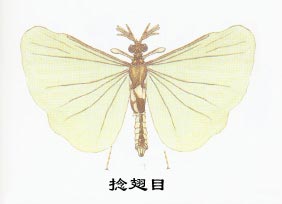[Economic Significance] Parasitic insects have complex metamorphosis and dimorphism. Some species parasitize agricultural and forestry pests and are one of the natural enemy insect groups. A few parasitize bees and are harmful to bee production.

[Identification points] Body length 1.3-4 mm, dimorphism between male and female. Males have well-developed compound eyes and no single eye. The third segment of the tentacles each has a side branch extending sideways. The hindthorax is extremely large, the forewings are reduced to balance sticks, and the hindwings are large and membranous. The head and thorax of the female insect are healed, with an opening in the center. The mouthparts have only one pair of upper jaws. No eyes, no antennae.
[Species and Distribution] There are more than 300 known species in the world, distributed in major animal geographical areas of the world. my country has recorded 13 species, most of which are obtained from breeding hosts. It is difficult to collect adult insects in the wild.
The characteristics of this order can be summarized as follows: parasitic insects of the order Trinoptera, the female has no eye canthus and missing wing legs; the male has a balance stick on the forewing and a branching at the extreme angle of the hindthorax.
animal tags: Tronoptera
We created this article in conjunction with AI technology, then made sure it was fact-checked and edited by a Animals Top editor.